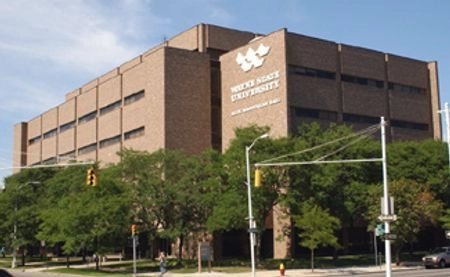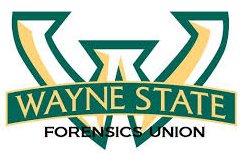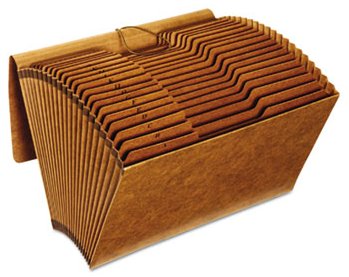George’s way. Continue reading
Having spent seven years debating against or coaching against the people from Wayne State University, I considered myself fairly knowledgeable about the debate program there on 1977. I knew that George Ziegelmueller had run the show for many years. In the mid-sixties the school produced some top debaters, but I had not been favorably impressed with them in more recent times. I did not realize until very recently that Dr. James Klumpp had directed the program during part of that time.
I met with George in late spring or early summer of 1977. His office was in Manoogian Hall on the fifth floor. The accommodations were MUCH nicer than at Michigan. The offices of the professors in the speech department surrounded a large open area. Across the hall was an even larger open area that served as the lounge for the Forensics Union, the official term for the competitors in debate and individual events (IE). It was at least ten times as large as the U-M debate office. It contained at least one lunch table, a sink, a refrigerator, several couches, and a few work areas.
George explained that all of the students at WSU commuted. They needed a place where they could hang around between classes to study or work on debate.
The Forensics Union, which everyone except George called the FU, also had its own bulletin board and trophy cases just outside of the lounge. At Michigan the trophies were piled up in a corner of the debate office. No one kept track of them.
George was aghast to learn that I had carted the U-M debaters around the country in Greenie to save money. The motor pool at Wayne State lent the FU cars. We were, however, required to wash them before we turned them in. This was a good deal for the team, of course, but we often returned from tournaments very late at night, and usually we delivered people to their homes, which were scattered throughout Detroit and its suburbs. I considered it a real pain to wash the car, especially in the winter.
The debaters were not given a per diem for food. Instead, the coach chose the restaurant, and we all ate together. The coach was supposed to use subtlety to indicate what the monetary limit was. George always said something like, “The grilled chicken looks good.” Students could buy snacks with their own money, but no one was allowed to go over the limit to buy a more expensive meal.
The staff in my first year (1977-78) consisted of Jack Kay1 (George’s right-hand man), Pam and Billy Benoit (my office-mates), and the residents of the other office for George’s graduate assistants—Vince Follert, John Pfeiffer, and Steve D’Agostino. Pam, John, and Steve worked with the IE team. The rest of us coached debaters.
The staff for 1978-79 was almost the same. Steve had departed, and Sheri Brimm had been hired.
My last year of coaching was 1979-80. Vince had finished his masters and gone to Western Illinois. Jack Kay departed for Nebraska. I don’t remember if John Pfeiffer was still there. Tuna Snider became George’s right-hand man. Gerry Cox and Ron Lee joined the staff. Ron’s wife Karen may have also helped out. Ken Haught may have worked with the IE people.
George explained his philosophy to me. In order to justify such nice facilities and such a large staff, it was important that the team keep up “the numbers”. So, it was necessary to undertake a massive recruitment effort in September. The people recruited had little or no experience with debate. We held staff meetings in order to assign reasonable pairings. The objective was to get as many people as possible to compete at the three-round novice tournament in October sponsored by the Michigan Intercollegiate Speech League (MISL). This was the tournament in which I had made my collegiate debating debut in 1966. As a coach I had shunned it as a waste of time. However, I would have taken novices who lacked high school experience if I had had any.
For much of September and October the coaches were busy with these new recruits. When the tournament arrived, we loaded up several vans with novices and drove to the site. Our most fervent hope was that every pair won at least one debate. Usually at least one team did not meet that standard. There were some tears.
After that tournament quite a few of the novices dropped out of the program, but at least they had one experience of real debates. George always found at least one more tournament for those who continued with the program.
The rest of the tournament schedule mostly consisted of tournaments fairly close to Detroit. George tried to find places in which everyone could compete. He especially liked tournaments that had a varsity division and a novice division or ones with both IE and debate. I even was called on to judge a few IE rounds, not my most enjoyable experience.
The top varsity teams went to slightly higher-level tournaments, but Wayne State did not attend the swings on either coast and did not go to Georgetown and some of the other top tournaments. This attitude changed a little in the second and third year when our records improved.
One of my assignments in 1977-78 was to schedule practice rounds, which served as the primary venue for coaching at Wayne. At the beginning of the semester all the coaches and debaters turned in cards with their schedules. They marked off the periods in which they had classes or were otherwise unavailable. Some, for example, had part-time jobs.
I found working with the cards to be clumsy. I photocopied a blank schedule onto a group of overlays used for an overhead projector. I then copied the data from cards onto the overlays with an erasable marker. To find the free periods for each foursome I just had to stack their overlays. In an hour I could easily generate the schedule for the week, and it always met George’s specifications . Previously people had labored over this task for an enormous amount of time and made mistakes.
Vince was assigned this task in 1978-79. He asked me how I did it. I showed him. I don’t remember who was responsible in 1979-80.
Before leaving for the first tournament in which I was in charge I asked for a short meeting with George. I inquired about a few of the team’s policies, including what to do if we were involved in a traffic accident. He said that no one had ever asked him about this. He thought for a moment and then said that he supposed that I should call him.
I could hardly believe that no previous coach had worried about this. Maybe it was understood that George was ultimately responsible for everything in this program. I just hoped that I had not jinxed the program by bringing up the subject.
George was understandably much more interested in public relations than I was. He sent debaters and/or IE people to give speeches or put on debates for various organizations fairly often. I was involved in a few of these, including moderating short debates for a local television station. I even made a commercial for our program.
In one way the Wayne State team was somewhat backward. George probably had a pretty good idea of the way that many judges evaluated debates, but the team lacked a systematic way of keeping the ballots. I showed George how I had stored all of U-M’s ballots sorted by judge in an accordion file. I asked if I could have the ballots when he was finished with them. He agreed.
Wayne State belonged to a national debate fraternity, Delta Sigma Rho-Tau Kappa Alpha (DSR-TKA). U-M had also belonged, but as far as I could tell, the school never really participated. George took the organization quite seriously. Wayne always attended the DSR-TKA nationals in March, and every spring there was a banquet in Manoogian. New members (like myself in 1978) were inducted and expected to provide entertainment.
The Forensics Union sponsored several extracurricular activities while I was there. Every year there was a Christmas party, the DSR-TKA banquet, a week-long summer institute for high school debaters, a trip to Camp Tamarack, a research trip, a fund-raising event of some sort, and, one year, a pinochle tournament. At U-M we had nothing similar to any of these.
1. My recollections of each of the other coaches are in a separate blog.






